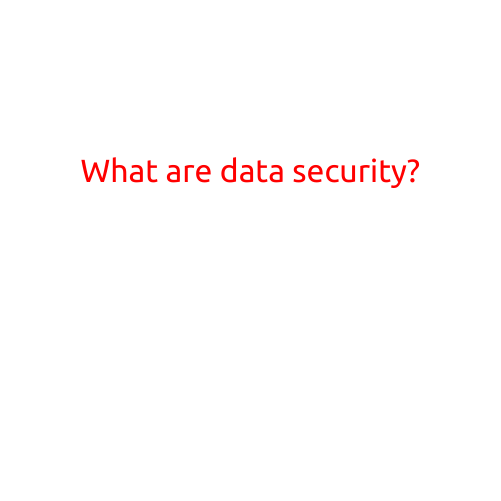
What are Data Security?
In today’s digital age, data has become a valuable asset for individuals and organizations alike. With the increasing reliance on digital technologies, the importance of data security has grown exponentially. Data security refers to the practices, technologies, and processes designed to protect digital information from unauthorized access, theft, damage, or destruction.
What is Data?
Before we dive into data security, let’s define what we mean by “data.” Data refers to the collection of facts, figures, and information stored electronically, such as:
- Customer information
- Financial records
- Personal identifiable information (PII)
- Sensitive business data
- Intellectual property
- Confidential documents
Why is Data Security Important?
Data security is vital for several reasons:
- Protection of Confidential Information: Data security protects sensitive information from falling into the wrong hands, preventing identity theft, financial fraud, and other breaches of confidentiality.
- Compliance with Regulations: Many industries, such as finance, healthcare, and government, have regulations that require data security measures to ensure compliance.
- Prevention of Data Breaches: Data security helps prevent cyber attacks, data theft, and other forms of unauthorized access, minimizing the risk of data breaches.
- Preservation of Business Reputation: A data security breach can negatively impact an organization’s reputation, leading to loss of customer trust and confidence.
- Compliance with Industry Standards: Data security measures are often mandated by industry standards, such as the Payment Card Industry Data Security Standard (PCI DSS) and the Health Insurance Portability and Accountability Act (HIPAA).
Types of Data Security
There are several types of data security measures:
- Network Security: Protects the network from unauthorized access, ensuring that only authorized devices can connect to the network.
- Data Encryption: Encodes data, making it unreadable to unauthorized users.
- Access Control: Regulates user access to data, ensuring that only authorized personnel can access sensitive information.
- Authentication: Verifies the identity of users, ensuring that only legitimate users can access data.
- Intrusion Detection and Prevention Systems (IDPS): Monitors network traffic for potential security threats, blocking malicious activity.
- Regular Backups: Ensures that data is recoverable in the event of a disaster or data loss.
- Physical Security: Protects physical devices and equipment from unauthorized access, such as locked cabinets and secure storage.
Best Practices for Data Security
To ensure data security, follow these best practices:
- Implement Strong Passwords: Use complex, unique passwords for all accounts.
- Keep Software and Systems Up-to-Date: Regularly update software and systems to patch vulnerabilities.
- Use Antivirus Software: Install and regularly update antivirus software to detect and remove malware.
- Limit User Access: Grant access to data only to those who need it.
- Monitor and Audit Data: Regularly monitor and audit data to detect and respond to security incidents.
- Conduct Regular Security Audits: Perform regular security audits to identify vulnerabilities and weaknesses.
- Provide Employee Education: Educate employees on data security best practices and the importance of data security.
Conclusion
Data security is a critical aspect of today’s digital landscape. By understanding what data security is and implementing the necessary measures, individuals and organizations can protect sensitive information from harm, ensuring compliance with regulations, preserving business reputation, and preventing data breaches.





